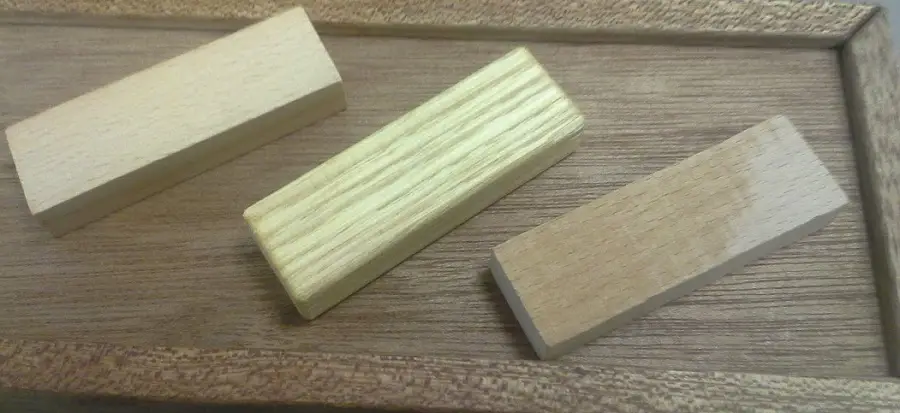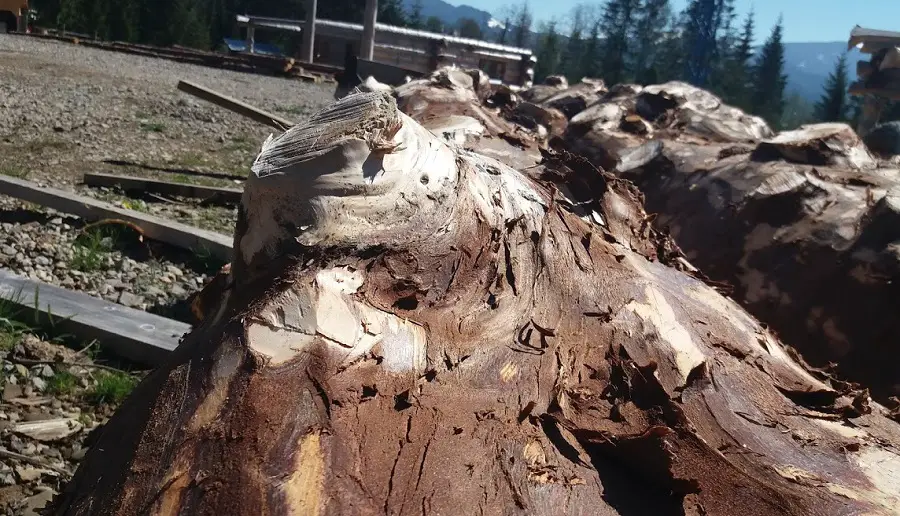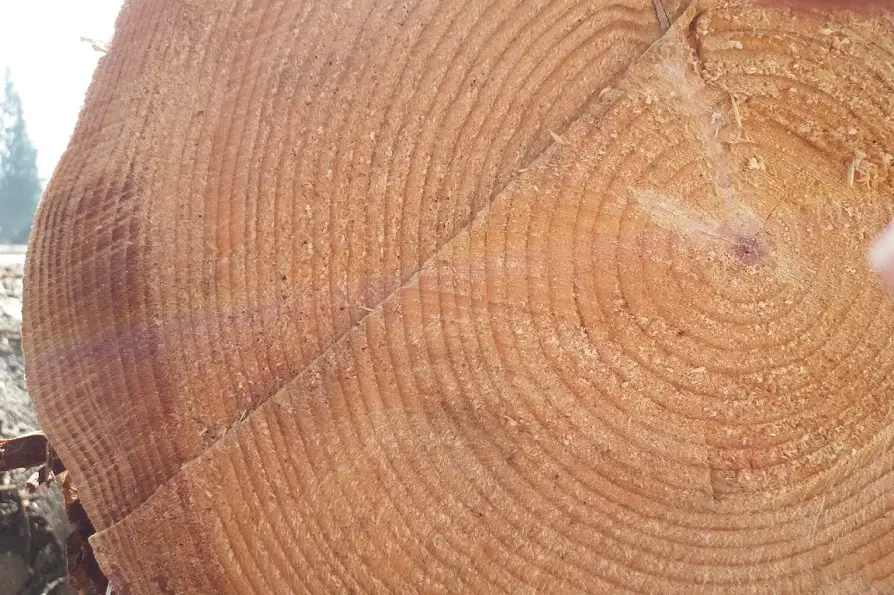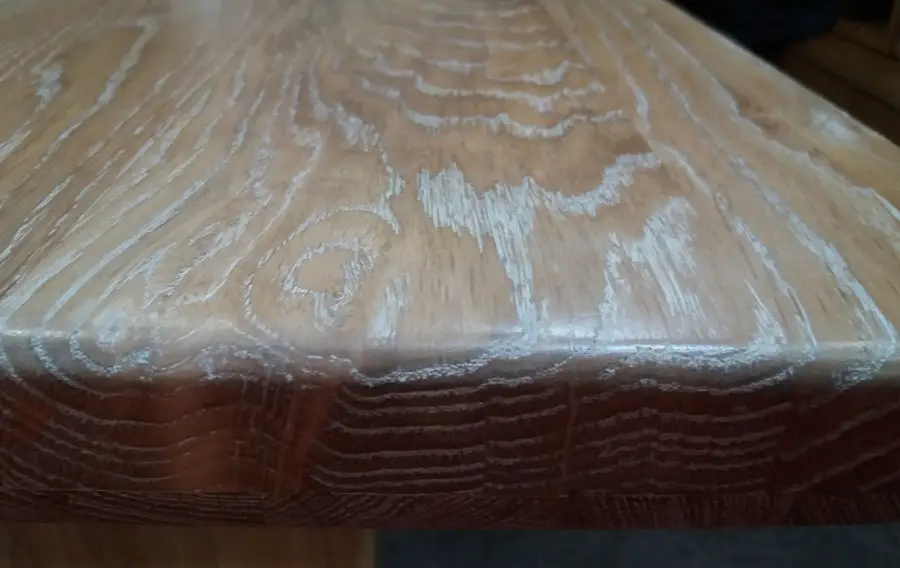Alburn, heartwood, latewood, latewood, earlywood, annual ring are names used quite often in articles, but I haven't talked about them much. I know, you can work wood without knowing scientific names. But knowing the terms helps us to have a common language. The above names are common and define the structure of wood, regardless of species. Based on these elements we know that we are dealing with harder or softer wood, with a more pronounced or duller pattern, with pores or without.

Information deciphered in the tree felling section
The structure of the wood is revealed as soon as the tree has been cut. A cross-section of most trees shows a lighter colored area on the outside of the tree and a darker area on the inside. These are alburn and heartwood, sapwood and heartwood, for those who want to search for information on foreign sites.
Alburnum and heartwood
The difference between them is huge. Alburnum is the physiologically active wood, i.e. the wood made up of cells that transport water with mineral salts, nourishing the tree. It is therefore less dense and has a high water content. The wood from this area is very little used and has very low outdoor resistance. The heartwood, however, is tough and dense and is made up of inactive cells. It is the area responsible for the tree's strength, not its nourishment. This is basically the wood used for furniture, construction and other wooden objects.
The zones are not the same size throughout the life of the tree. At the beginning, when the tree needs a lot of food to grow, the sapwood zone is very large and the heartwood zone is small. This is why young trees break more easily and it is not recommended to cut them down for wood processing. With the passage of time the proportion changes, some of the cells cease their feeding activity and pass into the strength structure. This is why trees are cut at maturity, when the heartwood area is at its maximum size.
There are not always color differences between the albumen and the heartwood. In this case identification is by density and water content. Species with clearly demarcated zones: nuc, oak, frasin, ulm, acacia, cherry, larch. Species with areas not delimited by colour: fag (the beech's red heart is a false heartwood), plop, you, birch, fir, spruce.

Bark and marrow
On the outside of the tree are bark. It is very clearly separated from the rest of the tree, having different structure, texture, color and appearance. It has an area of living cells in contact with the tree and an area of dead cells on the outside. It is a protective layer similar to human skin, which covers the entire tree, but the layer on the trunk is different in thickness and appearance from that on the branches. It contains tannins, resins and other substances that repel pests and repair wounds.
The marrow is in the center, surrounded by the heartwood. It is brownish in color, different from the dura. It is made up of dead cells and is loose and weak. It is not used at all for the production of wooden objects. After maturity this area starts to grow, decreasing the strength of the tree. Inside, a loose, hollow area is formed in places, with no role in supporting the trunk. Over time, therefore, trees become increasingly hollow until they are easily blown down by winds and storms. Like humans, trees age and die. The age at which this happens varies from species to species. Some species are very long-lived, reaching 1000, even 2000 years, such as the olive tree or 1000 years for oaks, others are shorter-lived, 200-300 years (beech), even 100 years (poplar).
Annual rings
I don't think it's any secret any more that the age of a tree is identified by the annual rings that we find on the trunk cut not far above the ground. They are specific to species growing in temperate zones, when the periods of plant growth and development are well defined. Annual rings are concentric circles that run from the center of the tree to the bark and have a regular outline in most species. However, there are also situations where the contour is finely wavy (arinRings are not visible in all species, but that doesn't mean they don't exist.
Each ring has two zones. The lighter colored and lighter colored area is called early wood. It is the wood deposited in the spring, when food supply is high and growth is rapid. The darker, denser area is called late wood. It is wood deposited in summer, when the food supply is lower (less rain) and the cells are more thoroughly laid down.

Visible structural elements in woodworking
When wood is processed, other specific elements appear: pores, medullary rays, resin channels, resin pockets. These elements help to identify the species and form the natural pattern so specific to wood.
Pores
They are basically sectioned wood cells, appearing as small holes in the wood structure. From the start, the existence of pores tells us that the wood is hardwood. Resinwood has no pores. In resinous plants, food is transported through very thin vessels called tracheids, where it enters the cell by osmosis. When these vessels are cross-sectioned, the holes typical of hardwoods do not appear.
The pores are larger and more in early wood and smaller and fewer in late wood. When the wood is cut tangentially to the annual ring, the wood with large pores forms specific patterns called flanging, or cathedral cutin English. When the cut is parallel to the annual rings (radial), they are seen as parallel lines.
The pores determine the wood's ability to absorb water. The more and larger the pores, the more the wood will tend to absorb. If such wood is used outdoors, it should be protected against moisture and should not come into direct contact with the ground. Species of wood with large pores: oak, ash, walnut, chestnut.
Spinal Rays
They are tissues made up of radially arranged cells that start from the pith and reach the bark. In cross-section they appear as lines or bands of varying thickness, straight or curved, with a luster and color different from that of the surrounding wood. In cross-section they may be interrupted, but are always continuous through the wood to the bark. When cut radially, the medullary rays appear as bands of different lengths and heights, with a distinctive sheen. This luster has led to the name 'mirrors', an aspect appreciated in paltin or oak.
Resiniferous channels
These are where resin is stored in the tree. Like medullary rays, they connect the pith to the bark. Their size and location differ from species to species. In cross-section they can be seen with the naked eye and are whitish in color, while in longitudinal section they appear as yellow-brown or whitish broken lines.
Grooves are specific to resinous wood, but not found in all species. They are present in pine, spruce or larch, but not in fir or yew. However, bags of resin can also occur accidentally in fir wood. Resin is used by the tree to heal wounds. If during growth the tree has been attacked and internal wounds occur, the resin under the bark migrates into the wound, healing it.

I hope the information will help you understand why wood looks or behaves a certain way, or why trees are only cut when they are mature. If you think the information is useful to others, feel free to share. And if you have any clarifications or questions, you can leave them below in the space provided.




































Very good article... if I had pronounced the word "tree" in the SL (Wood Studies) exam I would definitely not have taken it. Please use tree...that's what I learned from the great university professors of Wood Industry (Seagull and Zlate).
Hello!
Thanks for your appreciation!
Can you please tell me why the professors at the Faculty of Wood Industry thought that the name "tree" should not be used? I looked it up and the only difference I found was the root of the words. For tree it's uncertain, while for arbore it's Latin. The DEX considers them synonyms. I'll try using "arbore", but I'm curious. 🙂
Thank you!
These subjects are done in the first years of college.... we all used to use "tree". A real specialist uses this scientific term "tree". This is what our teachers wanted us....to become professional specialists.
Thank you!
The explanation I got is:
* Tree - tree that stands alone, not part of the forest
* Pom - fruit tree
* Tree - a generic term including the above.
Thank you! Do you know if there is somewhere in writing this explanation? I don't find the differences between tree and tree explained in writing. They are considered synonyms. For the tree there is an explanation of the difference and it really refers to the ability to make...poam. 🙂
All the best!
In Romanian, the term "arbore" is mostly used in scientific, botanical or technical contexts, while "copac" is more common in everyday speech. Since the scientific names are in Latin hence this name ; in Latin: arbor, arboris - generally designating a tree or a tree. The teachers of wood specialties in Brasov tried to educate in this scientific sense. There would be another classification as Ovidiu said above:
* Tree - tree that stands alone, not part of the forest
* Pom - fruit tree
* Shrub - part of a forest, arboretum.
Thanks for the clarification!